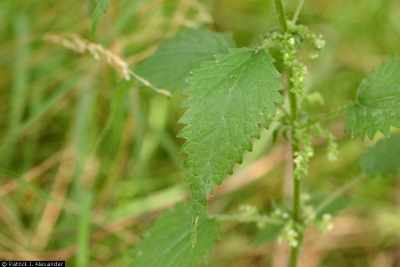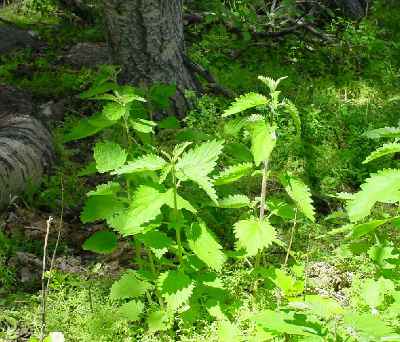Stinging Nettle Medical Uses

Stinging Nettle grows up to 7 feet tall although 2-3 feet tall plants are more common, at least where I live. Local climate and sub species will dictate this for you. The plant is perennial and it dies back to the ground during the winter months and the re-emerges in the spring. The roots of the Stinging Nettle are yellow in color and spreading in nature consisting of rhizomes and stolons. The green leaves are 1 to 6 inches long and are presented in an opposite not alternate manner on the erect green stem. The leaves always have a very serrated margin.

Stinging Nettle required moist soil so although it is found in all states except Hawaii. It is restricted as all plants are to the appropriate habitat.
An enlarged prostate, which is a common problem for aging men, can cause an increased urge to urinate, an incomplete emptying of the bladder, even painful urination, post urination dripping and reduced urinary flow. Modern doctors have not been able yet to determine how Stinging Nettle helps with these problems but it does. Stinging nettle root extract has also been shown to slow or stop the spread of prostate cancer cells. The root is used in connection with urinary issues.
It's also possible that the historic use of these roots for bladder infections does have some basis in fact but this isn't as well documented.
 Studies support the use of Stinging Nettle leaves topically at the site of arthritis pain can decrease the pain. Some also take Stinging Nettle orally for arthritis.
Studies support the use of Stinging Nettle leaves topically at the site of arthritis pain can decrease the pain. Some also take Stinging Nettle orally for arthritis.
Stinging nettle has anti-inflammatory qualities that alleviate hay fever symptoms if taken early. Why? The leaves contain histamine! Yes, you might think that would be the opposite of what would help with an allergic reaction, if so you will just have to trust me on this one or go read the study yourself where it was tested against placebos.
Stinging Nettle contains some components that are used in conjunction with other chemicals to reduce bleeding during surgery. I am not sure if this will help by itself but applying it to a wound when in a survival situation might be all you can do. Worth a shot!
Eczema, a dry, itchy rash that can last for long periods of time, can be treated with Stinging Nettle both orally and topically.
Preliminary studies have shown that Stinging Nettle taken orally can lower blood sugar and blood pressure. Keep in mind this was animals and not people.
